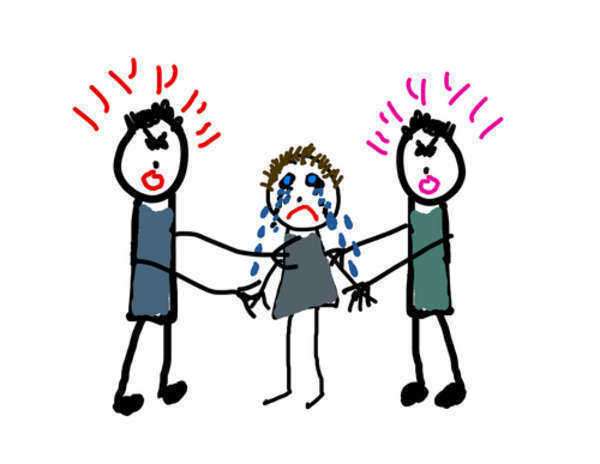
Understanding Child Custody
Divorce can be a challenging and emotionally draining experience for everyone involved. However, when you have children, going through a divorce can be a nightmare. Figuring out where your children will live and how they will be cared for after the divorce can be one of the most difficult issues to resolve. This is why child custody is one of the most challenging aspects of a divorce proceeding. This article discusses child custody and the various options that are available to parents in different situations. We will also highlight the latest trends and statistics about child custody, as well as the factors that influence child custody decisions.
What is Child Custody?
Child custody is a legal term used to describe the rights and responsibilities that parents have towards their children. Essentially, custody refers to the legal authority to make decisions about where the child lives, goes to school, receives medical care, and how they will be raised. Custody can take many forms, including physical custody, legal custody, and joint custody.
Physical custody refers to where the child lives. In some cases, one parent may have sole physical custody, which means that the child lives primarily with that parent. In other cases, the parents may share physical custody, which means that the child spends time with both parents according to a set schedule.
Legal custody refers to the right to make important decisions for the child. This includes decisions about the child’s education, healthcare, and other important issues. Parents who share legal custody are expected to make these decisions jointly, working together to ensure that the child’s best interests are served.
Joint custody is a combination of both physical and legal custody. It generally means that both parents share decision-making authority and that the child spends significant time with each parent. Joint custody is often considered the ideal situation for children of divorce, as it allows them to maintain strong relationships with both parents.
Types of Custody Arrangements
While the types of custody arrangements can vary greatly depending on the circumstances of each case, most custody arrangements fall into one of several categories. These categories include:
Sole Custody: Sole custody, as the name suggests, gives one parent complete custody of the child. This parent is responsible for making all decisions regarding the child’s upbringing and provides the primary home for the child.
Joint Custody: In a joint custody arrangement, both parents share legal custody of the child and are responsible for making important decisions about their child. Physical custody may be shared equally, or the child may spend more time with one parent than the other.
Split Custody: A split custody arrangement involves dividing the children between the two parents. This means that one parent may have physical custody of one child, while the other parent has physical custody of the other child.
Bird’s Nest Custody: In bird’s nest custody, the child remains in the same home and both parents take turns living there according to a preset schedule. This can be the child’s original home or a rented apartment, and it requires both parents to have separate homes.
Third-Party Custody: In some cases, a third party (such as a grandparent) may be granted custody of the child instead of one or both parents. This is typically only done when both parents are unable or unwilling to care for the child.
Factors Considered in Child Custody Decisions
When a judge is considering a child custody case, he or she will consider a variety of factors to determine what is in the best interests of the child. These factors may include:
1. The age of the child
2. The child’s physical and emotional health
3. The ability of each parent to provide for the child’s needs
4. The financial situation of each parent
5. The child’s relationship with each parent
6. The child’s overall stability and well-being
7. The child’s wishes (in some cases)
These factors can be complex and difficult to evaluate. For this reason, it is essential to work with a skilled attorney who can help guide you through the custody process and ensure that your rights and the best interests of your child are protected.
Trends and Statistics in Child Custody
Over the past several decades, the trend in child custody arrangements has shifted towards joint custody arrangements. This is largely due to the recognition that children benefit from having strong relationships with both parents, even after a divorce. In fact, joint custody is now the preferred option in many states, and some states even have laws that encourage joint custody arrangements.
According to a report by the U.S. Census Bureau in 2011, there were approximately 13.7 million custodial parents in the United States, and 22.2 million children living with a custodial parent. Of those custodial parents, 69 percent were mothers, and 31 percent were fathers. The majority of custodial parents (61 percent) had only one child living with them.
Another recent trend in child custody is the rise of co-parenting. This is an arrangement in which parents who are not in a romantic relationship work together to raise their children. Co-parenting often involves shared physical and legal custody and a commitment to putting the needs of the child first. Co-parenting can be challenging, but it can also be a highly effective way to ensure that children of divorce receive the care and support they need.
Conclusion
Child custody is one of the most challenging aspects of a divorce proceeding, but with the right guidance, it is possible to create a custody arrangement that works for everyone involved. By understanding the different types of custody arrangements, the factors that influence custody decisions, and the latest trends and statistics in child custody, parents can make informed decisions about what is best for their child. If you are going through a divorce and are concerned about child custody, it is important to work with a qualified attorney who can help guide you through the process and protect your rights.
Understanding Child Custody
Child custody is the determination made by the court responsible for the child custody hearing, which establishes which of the two parents will be considered to be the guardian – or custodial parent – of the child or children in question. The procedure undertaken in order to determine child custody differ on a case by case basis with regard to applicable jurisdictions, the respective relationship undertaken with regard to each parent involved, and the analysis of residence.
Child Custody Basics
Although circumstances may exist in which parents will be able to determine custody without contention – resulting from individual relinquishment of custodial claims, other circumstances may exist in which judicial review may be necessary in order to determine a decision with regard to custody.
Parents who are not considered to be the primary custodian of a child will be required to pay child support to the parent undertaking primary custodial responsibility:
Temporary Child Custody
Temporary custody is the child custody awarded to a parent during the process of divorce or separation that grants custody to parent with full rights of custody to the exclusion of the other parent. The non-custodial parent can receive limited rights in some cases, as well as supervised visitation rights.
Joint Child Custody
Joint custody gives equal rights to both parents to make decisions concerning the upbringing of the child. Courts award joint custody in cases where both parents can properly perform their duties as parents. If an applicant parent to sole custody, the parent applicant to rebut a presumption that joint custody is in the child.
Sole Child Custody
Sole custody of one parent does not preclude the non-custodial parent from visiting with the child in question with the exception of abuse or criminal activity. In the event that a sole custodian agrees to visitation rights for the non-custodial parent in a child custody case, the courts may still impose restrictions on visits by non-custodial parents
Third Party Child Custody
The court may grant custody of the child to a third party when – or if – the third party has claimed responsibility; grandparents or close familial relatives are often regarded as third party custodians. If a married couple shares multiple children, the court has the power to not only separate the children, but also determine which children – if any – would be better suited with specific parents. However, for reasons of moral support, children are kept together in most cases.
Custodial Visitation
In certain cases, the custodial parent will be responsible for determining visitation rights and privileges with regard to the non-custodial parent; however, the presiding court has the power to deny or overturn any visitation arrangements. Legal hearings involving the determination of custody including circumstances considered to contribute to place a child’s emotional wellbeing at risk are as follows:
· Non-custodial parents who have been physically or have emotionally abused the child in the past
· Non-custodial parent suffers from serious mental illness
· Parents who are in prison or have a criminal record are not automatically denied visitation rights, yet are seldom considered as custodians. Custody vs. Guardianship The custodial parent is the parent who is considered to be the legal guardian of the child – or children in question.
The classification of legal guardianship mandates the expressed right to determine any and all decisions and life choices with regard to a child or minor – including:
· The determination of religion
· The decision with regard to education undertaken by a child
· Residential guidelines; guardianship undertaken by the custodial parent serves as the primary residence for the child or children



























